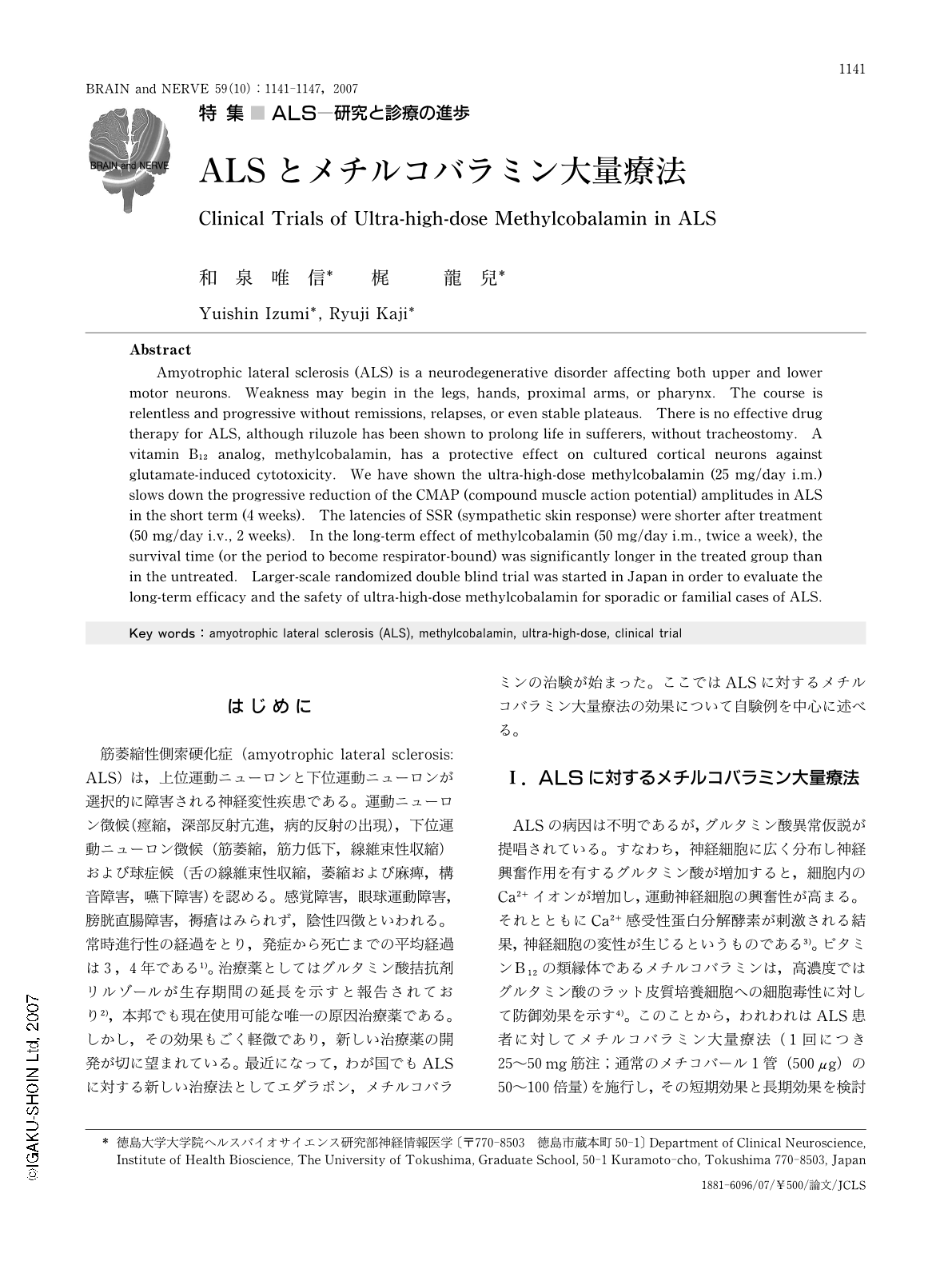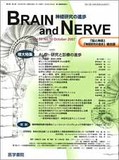Japanese
English
- 有料閲覧
- Abstract 文献概要
- 1ページ目 Look Inside
- 参考文献 Reference
はじめに
筋萎縮性側索硬化症(amyotrophic lateral sclerosis: ALS)は,上位運動ニューロンと下位運動ニューロンが選択的に障害される神経変性疾患である。運動ニューロン徴候(痙縮,深部反射亢進,病的反射の出現),下位運動ニューロン徴候(筋萎縮,筋力低下,線維束性収縮)および球症候(舌の線維束性収縮,萎縮および麻痺,構音障害,嚥下障害)を認める。感覚障害,眼球運動障害,膀胱直腸障害,褥瘡はみられず,陰性四徴といわれる。常時進行性の経過をとり,発症から死亡までの平均経過は3,4年である1)。治療薬としてはグルタミン酸拮抗剤リルゾールが生存期間の延長を示すと報告されており2),本邦でも現在使用可能な唯一の原因治療薬である。しかし,その効果もごく軽微であり,新しい治療薬の開発が切に望まれている。最近になって,わが国でもALSに対する新しい治療法としてエダラボン,メチルコバラミンの治験が始まった。ここではALSに対するメチルコバラミン大量療法の効果について自験例を中心に述べる。
Abstract
Amyotrophic lateral sclerosis (ALS) is a neurodegenerative disorder affecting both upper and lower motor neurons. Weakness may begin in the legs, hands, proximal arms, or pharynx. The course is relentless and progressive without remissions, relapses, or even stable plateaus. There is no effective drug therapy for ALS, although riluzole has been shown to prolong life in sufferers, without tracheostomy. A vitamin B12 analog, methylcobalamin, has a protective effect on cultured cortical neurons against glutamate-induced cytotoxicity. We have shown the ultra-high-dose methylcobalamin (25 mg/day i.m.) slows down the progressive reduction of the CMAP (compound muscle action potential) amplitudes in ALS in the short term (4 weeks). The latencies of SSR (sympathetic skin response) were shorter after treatment (50 mg/day i.v., 2 weeks). In the long-term effect of methylcobalamin (50 mg/day i.m., twice a week), the survival time (or the period to become respirator-bound) was significantly longer in the treated group than in the untreated. Larger-scale randomized double blind trial was started in Japan in order to evaluate the long-term efficacy and the safety of ultra-high-dose methylcobalamin for sporadic or familial cases of ALS.

Copyright © 2007, Igaku-Shoin Ltd. All rights reserved.


